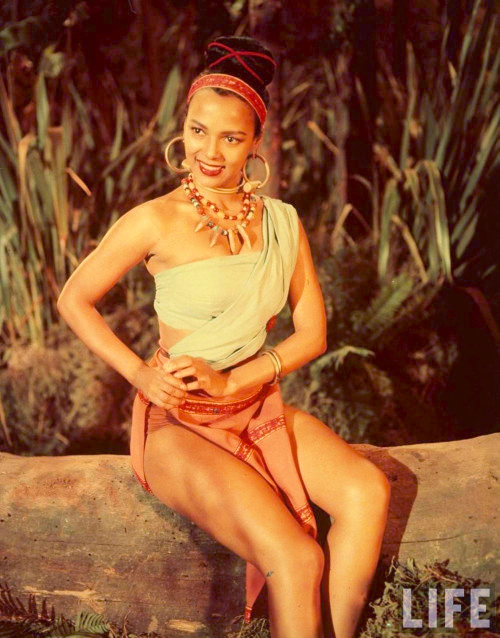As we approach the release of The Legend of Tarzan (2016) we're ogling past screen incarnations of the Lord of the Apes...
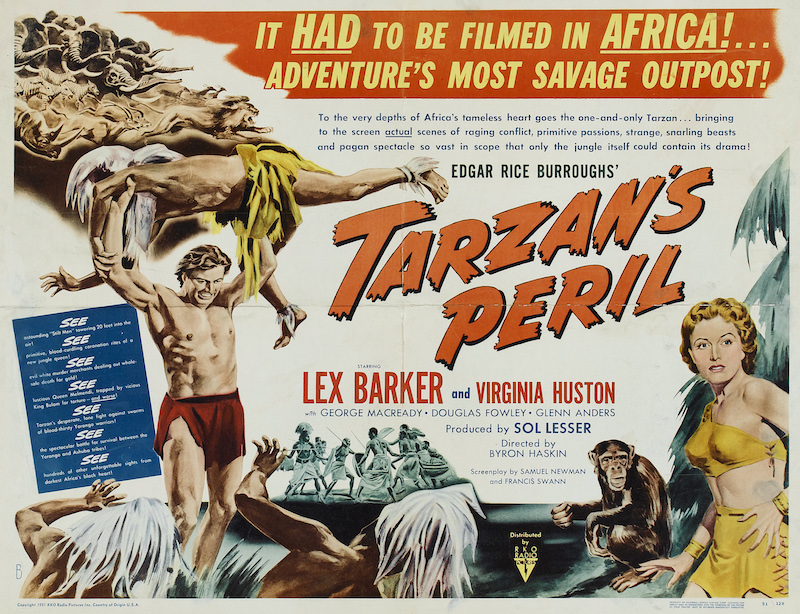
After Johnny Weissmuller & Maureen O'Sullivan gave us the deservedly definitive Golden Age Tarzan and Jane, the franchise had to recast or close shop. O'Sullivan left first and by the late 40s Weissmuller was feeling too old for the role and also called it quits. The producer Sol Lesser wasn't about to let the profitable franchise go, though, and led a search for a replacement. The winner was Lex Barker, a then little known blue blood actor from New York who had been disowned by his family for choosing an acting career (!) and he took up the loincloth in 1949 for Tarzan's Magic Fountain.
I opted to watch Barker's third go at the character in Tarzan's Peril (sometimes called Tarzan and the Jungle Queen) because it was the first Tarzan film to actually shoot some scenes in Africa (Kenya to be exact) and six actors down the call list was the curio factor of a young Dorothy Dandridge as "Melmedi, Queen of The Ashuba".
Dorothy & Lex after the jump...
Dandridge is the second future Oscar player we've spotted in this series after Mischa Auer in Tarzan the Fearless. But there were a few others:
• Barry Fitzgerald appeared in Tarzan's Secret Treasure (1941). Later won the Oscar for Going My Way (1944)
• Charles Bickford & Chill Wills appeared in Tarzan's New York Adventure (1942). Bickford became a regular nominee in the 40s and Wills was nominated for The Alamo (1960)
• Nancy Kelly appeared in Tarzan's Desert Mystery (1943). Later nominated for The Bad Seed (1956)
• Special Case: Maria Ouspenskaya, who appeared in Tarzan and the Amazons in 1946 at the tail end of her career was, as far as I can tell, the only former Oscar nominee to grace the films.
In 1951, Dandridge had already appeared in 20 or so films in small or uncredited roles and had significant success as a singer but she wasn't yet a "star." But to play a Queen onscreen, you need to be able to pull focus, like you know your worth.
Dandridge, already quite a beauty, was just three years away from the film for which she's best remembered, Carmen Jones, which would make her the first black woman ever to be nominated for Best Actress. The latter film established her as a legend before her time, with an unsatisfying career perpetually stymied by Hollywood's institutional racism. But first there were smaller roles, though not ever (but for Tarzan) in genre flicks.
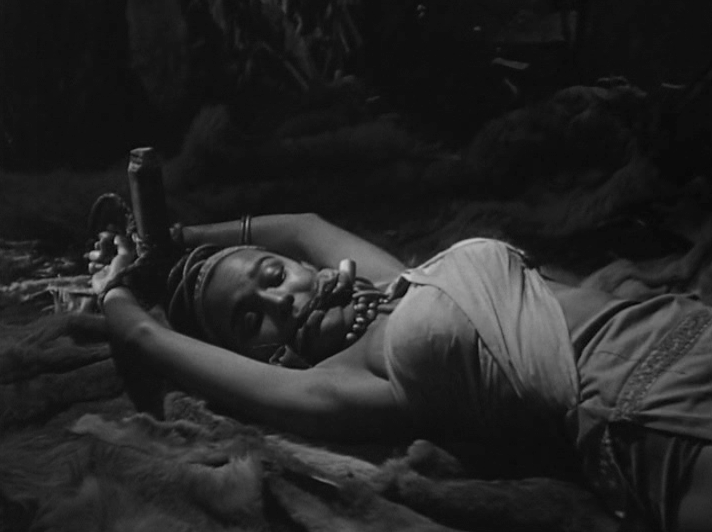
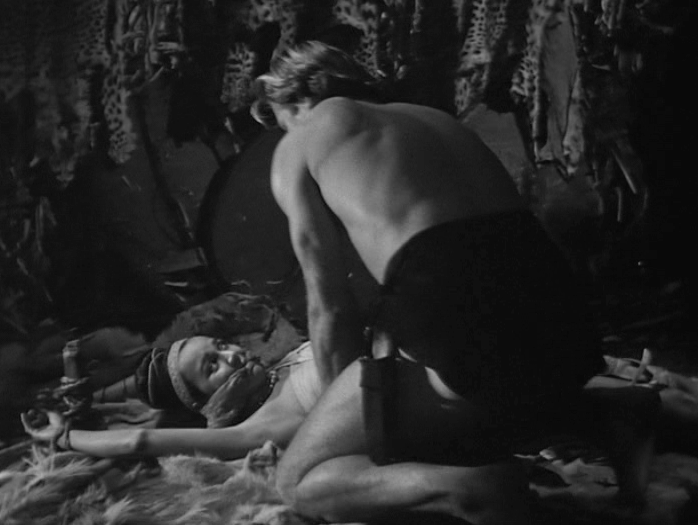
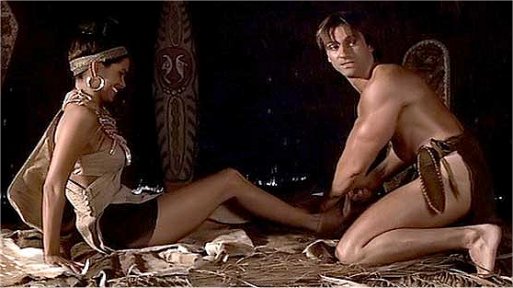 Halle Berry recreating a moment from the Tarzan's Peril set
Halle Berry recreating a moment from the Tarzan's Peril set
Halle Berry famously told Dorothy's story in the TV biopic Introducing Dorothy Dandridge, and here's a fun trivia bit, Halle even acted out a key scene from Tarzan's Peril in that film when Melmedi is captured by a nearby King who she had emphatically refused each time he proposed marriage. (Don't you love it when modern film and television recreates famous Old Hollywood bits?)
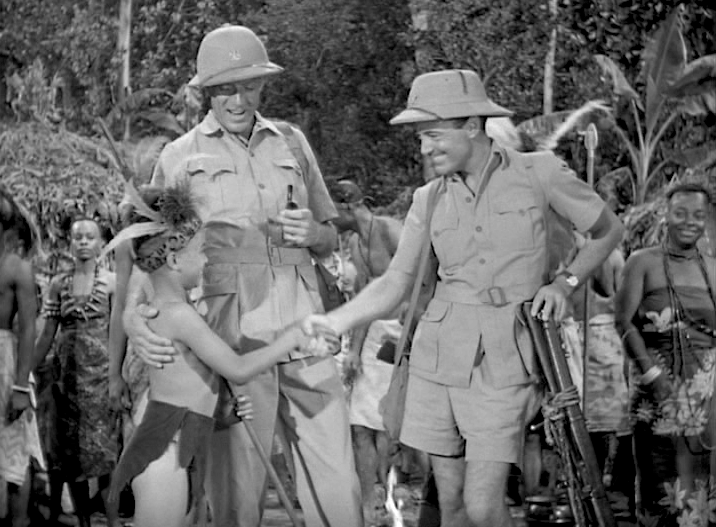 Little Nessie talks to British good guys -- who are naturally not long for this world since somethings got to spur Tarzan to action
Little Nessie talks to British good guys -- who are naturally not long for this world since somethings got to spur Tarzan to action
The racial situation is not perfect by any means but there's quite a lot of progress from the 1930s films in terms of the depiction of Africans. The natives are no longer chanting zombies just carrying things for white men. Well, there's some of that on the villainous side of the plot but they are condemned for slavery. We mostly spend time with the Queen and her people and they dance and chant and smile and the camera is actually interested in them! And later in the movie they don't just let Tarzan be the hero, they also fight back with him with the Queen rallying her troops to battle.
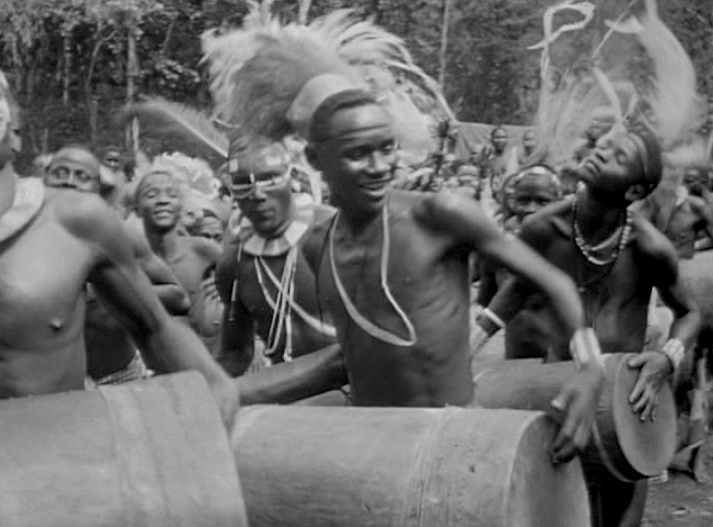
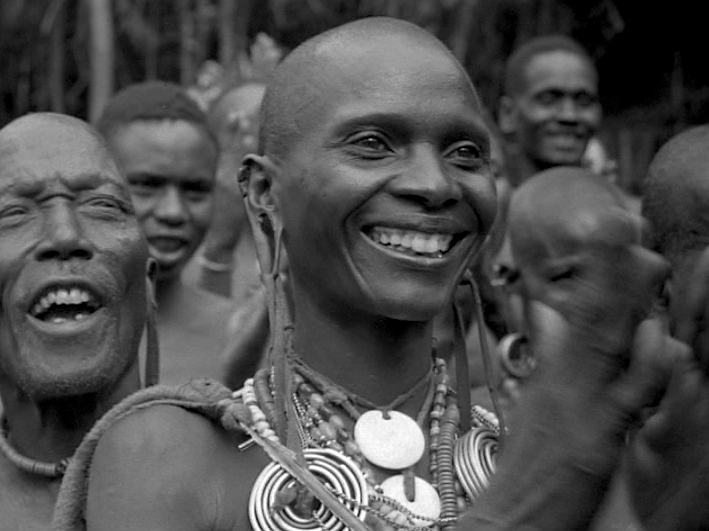
Because of the presence of real Africans and not Hollywood extras, though, the American actors don't always blend in as well. Dandridge clearly has ear prosthetics to give her those weighted down with jewelry elongated lobes and she and little Nessie and the main African villain all seem very Hollywood in comparison to the villagers.
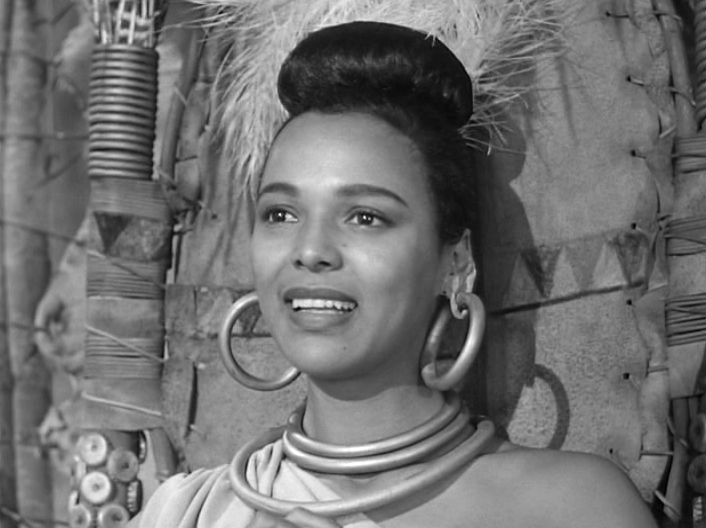 Dorothy's first closeup. It's her coronation day as queen
Dorothy's first closeup. It's her coronation day as queen
If it sounds like we're avoiding the natural topic of a Tarzan film, the movie itself and its actual Tarzan, it's because there's little to speak about. Though Barker's inability to keep a Jane for more than a single film (all five of his Tarzan outings had different Janes) raises eyebrows in retrospect, he at least looked the part. Broadchested, gorgeous, and so tall and sturdy looking it's difficult to imagine him being bested in hand to hand battles. He's actually the tallest of the screen Tarzan's at 6'4" and the size works well in the fight sequences. When your opponents have a ton of weapons and you only have your body, it'd better be a good one.
But could Barker act the part?
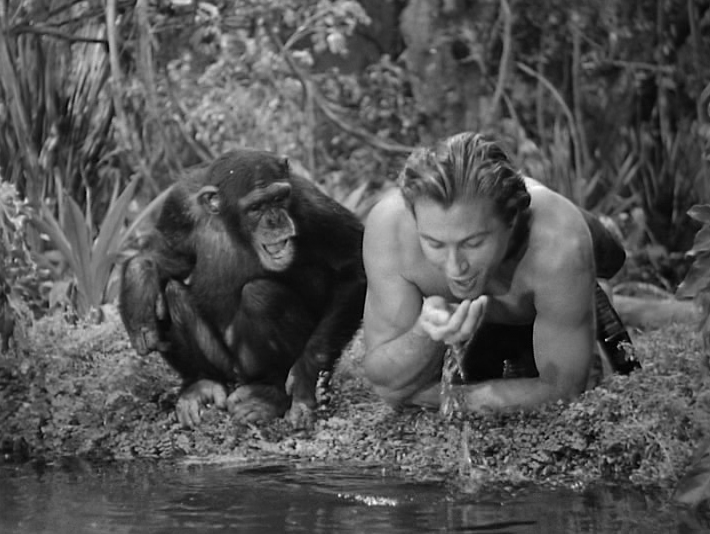
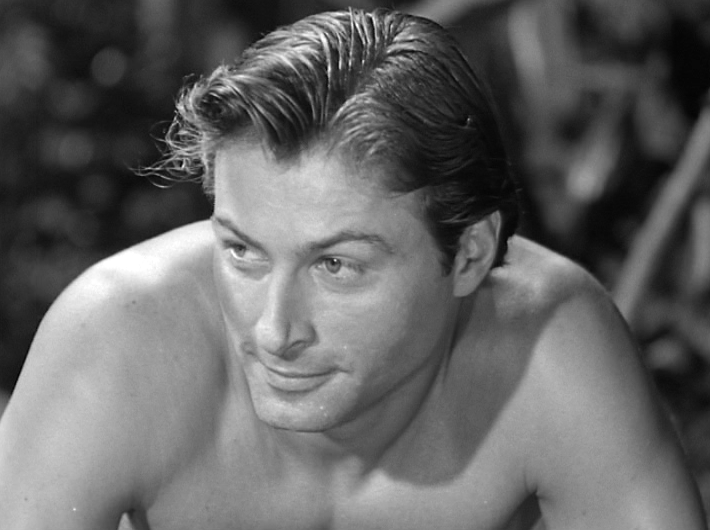
What you say Cheetah? This time we stay out of trouble.
In his first scene, it's not clear. Unlike Weismuller who perfectly captured a childlike spirit, Barker radiates intelligence, and a sly sense of humor but his (and/or the screenplay's) commitment to Tarzan's limited speech is haphazard at best. Wikipedia tells me (sorry!) that the producers forced him into maintaining the Weismuller speech patterns but it's a shame since in real life Barker was Ivy league educated and spoke multiple languages and they might have jumped into "learned" Tarzan sooner than the series actually got there. This film also shows us the problem of playing Tarzan if you don't have a strong Jane.
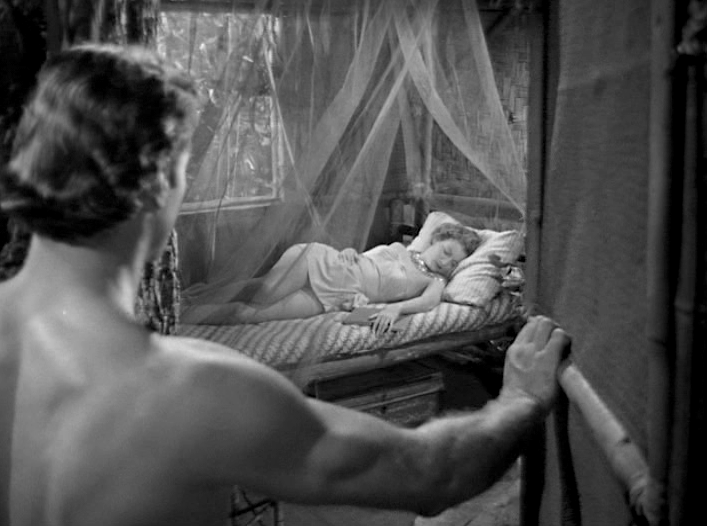
Barker isn't bad, just inconsistent, but he's paired with a thoroughly domesticated and very dull Jane (Virginia Huston) who the filmmaking team appear to have reimagined as a 50s homemaker. She comes complete with a suburban ready spotless treehouse (and tiny twin bed - no room for Tarzan!). And then there's this thoroughly agonizing conversation...
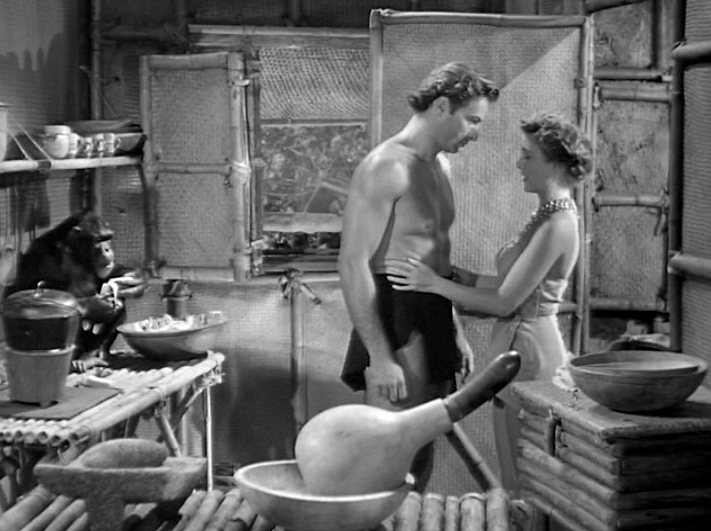 Tarzan and Jane barely touch in this movie so you have to be quick with the screen grab.
Tarzan and Jane barely touch in this movie so you have to be quick with the screen grab.
-Put that back. You'll eat your dinner served properly on a table.
-Jane. You love Tarzan? You happy?
-Well of course, dear! Now come on. Clean up. Sit down at the table and I'll serve dinner.
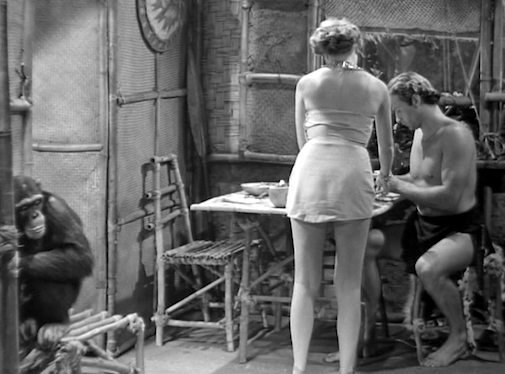
-You not get lonely when Tarzan away?
-Don't flatter yourself so much. I have plenty to keep me busy. It would tire you out just following me around for one day.
-What you do all day?
-I have plenty to keep me busy. Clean the house. Read a book or two.
The 1950s are the 1950s are the 1950s onscreen even if you're married to a wild man in the jungle.
Perhaps as a result of the Jane downgrade from active frisky partner to suburban housewife, Tarzan is practically married to Cheetah in the film. They even hug and kiss once.
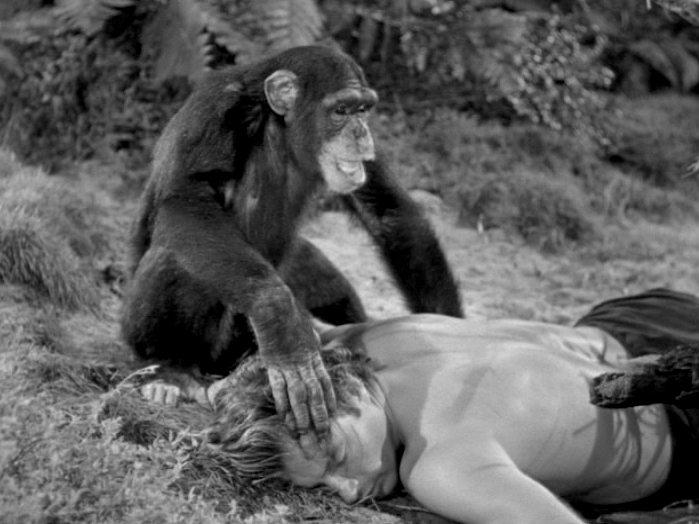 Cheetah is practically a co-lead this time
Cheetah is practically a co-lead this time
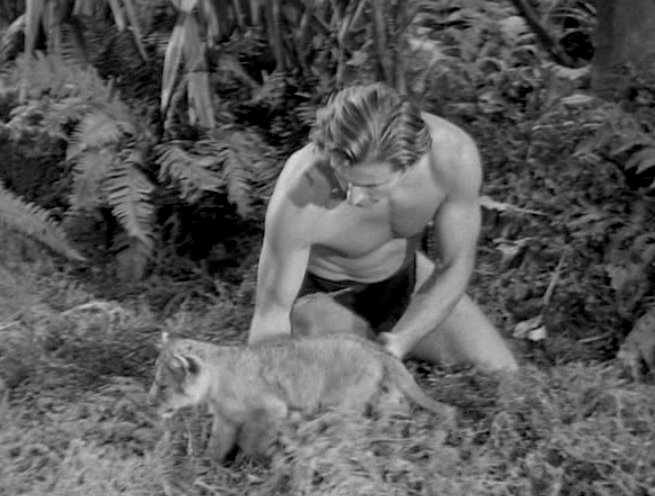 Tarzan saves a baby lion. A rare case of Barker interacting with an animal in the film.
Tarzan saves a baby lion. A rare case of Barker interacting with an animal in the film.
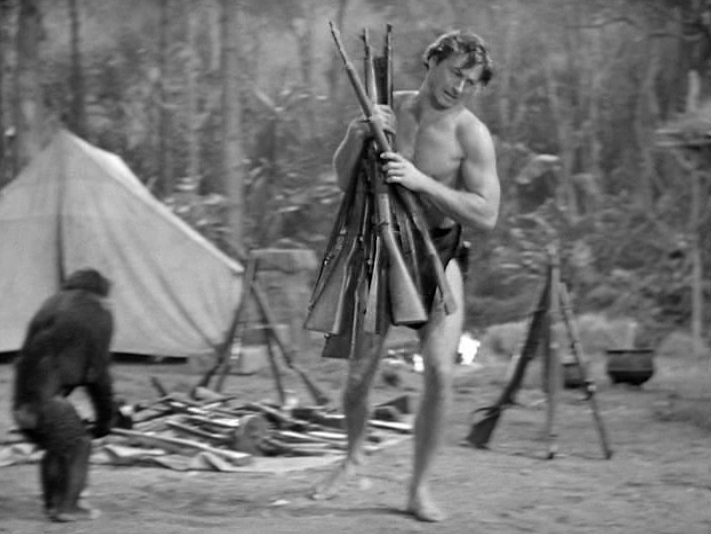 The NRA would not approve of this movie. Tarzan will not have guns in his jungle!
The NRA would not approve of this movie. Tarzan will not have guns in his jungle!
The film is less than satisfying, with an extremely simple plot (Tarzan is trying to stop gun-running in the jungle. That's about it), and a hugely disappointing lack of jungle animals, friendly or otherwise, with Tarzan only really sharing frames with Cheetah and two baby animals. And Tarzan canoes instead of swimming! What is happening? Did Lex Barker not want to work with animals? Did he dislike getting wet?
Tarzan fights no animals in the whole movie (though he kills a very fake python puppet with a thrown blade) and there is only one big elephant cameo (stock footage) which ends with a truly suspect closeup where the trunked creature appears to have been made with paper mache. It begs the question: Why cheat? Elephants are super trainable and all that they needed this one to do was lift a branch off of Tarzan. The only real elephant Tarzan interacts with is a baby phant who he rescues from a carnivorous plant.
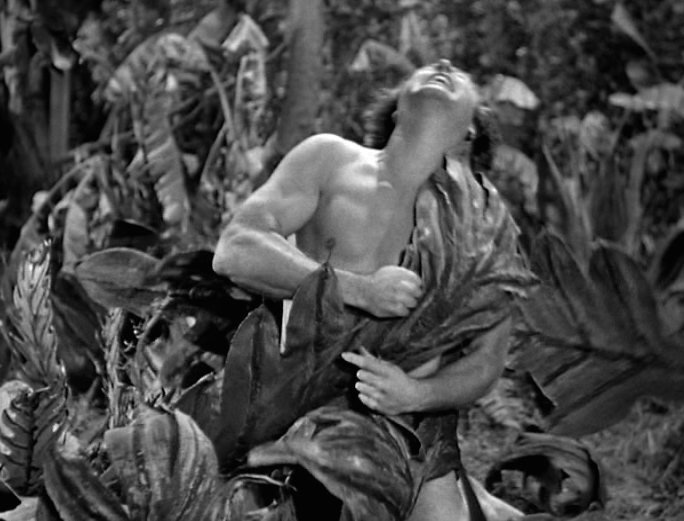
If only someone someone could have rescued Barker and/or Tarzan for this particular movie. Dorothy Dandridge promoted to the Jane role might've helped but this was Hollywood in 1951.

All Chapters:
Ch. 1 Buster Crabbe in Tarzan the Fearless (1933)
Ch. 2 Johnny Weissmuller & Maureen O'Sullivan in Tarzan and His Mate (1934)
Archive Extra: Tarzan the Ape Man (1932)
Ch. 3 Lex Barker in Tarzan's Peril (1951)
Ch. 4 Gordon Scott in Tarzan's Great Adventure (1959)
Ch. 5 Mike Henry in Tarzan and The Valley of Gold (1966)
Ch. 6 Bo Derek & Miles O'Keeffe in Tarzan the Ape Man (1980)
Ch. 7 Oscar loves Greystoke, The Legend of Tarzan: Lord of the Apes (1984)
